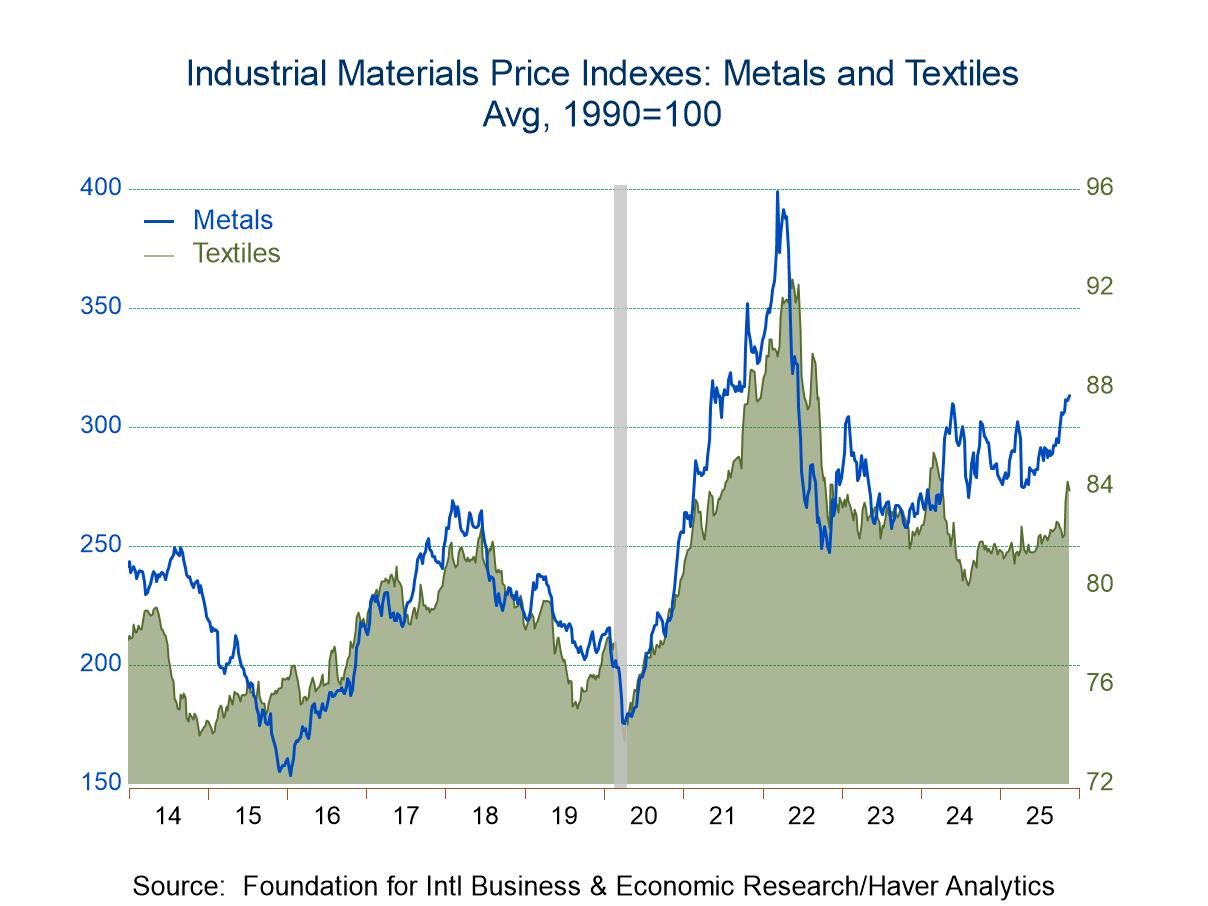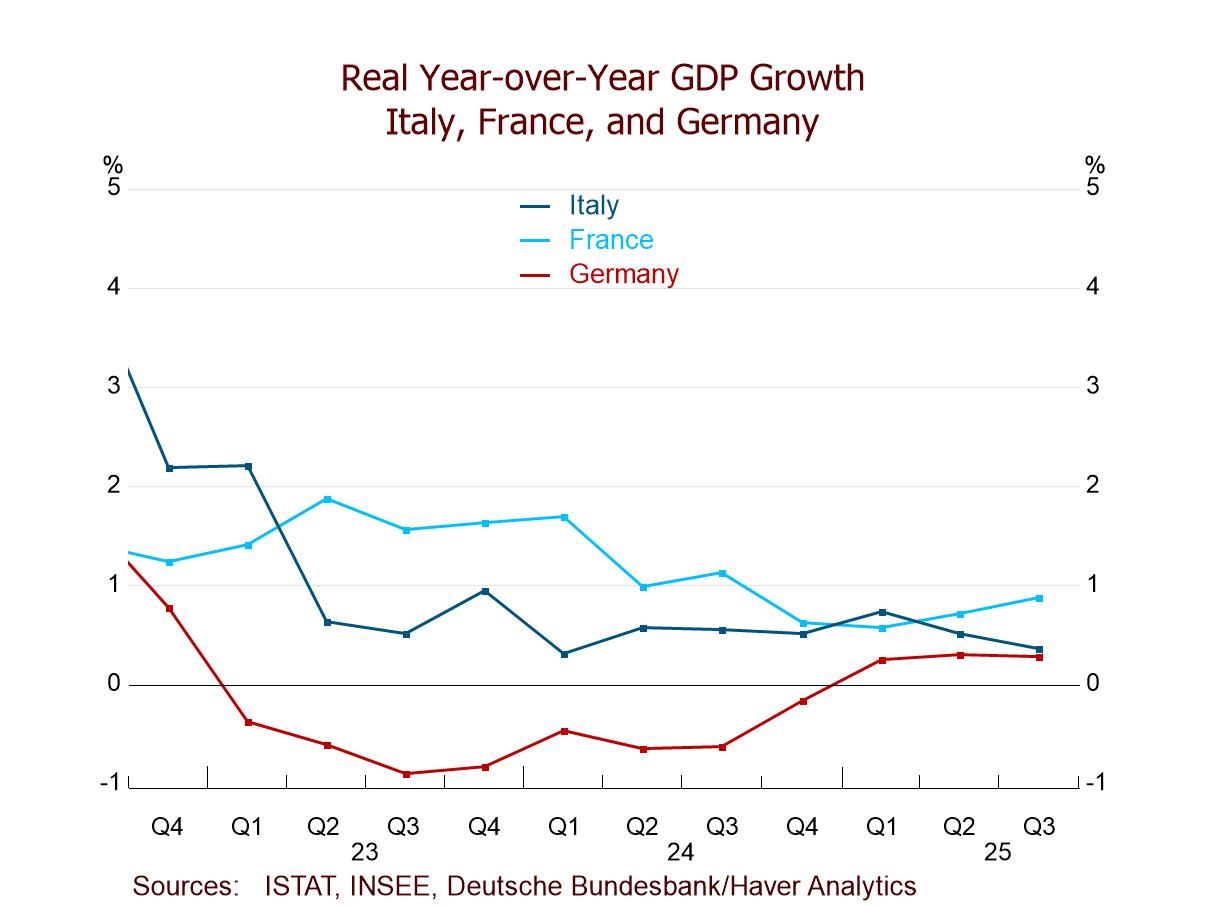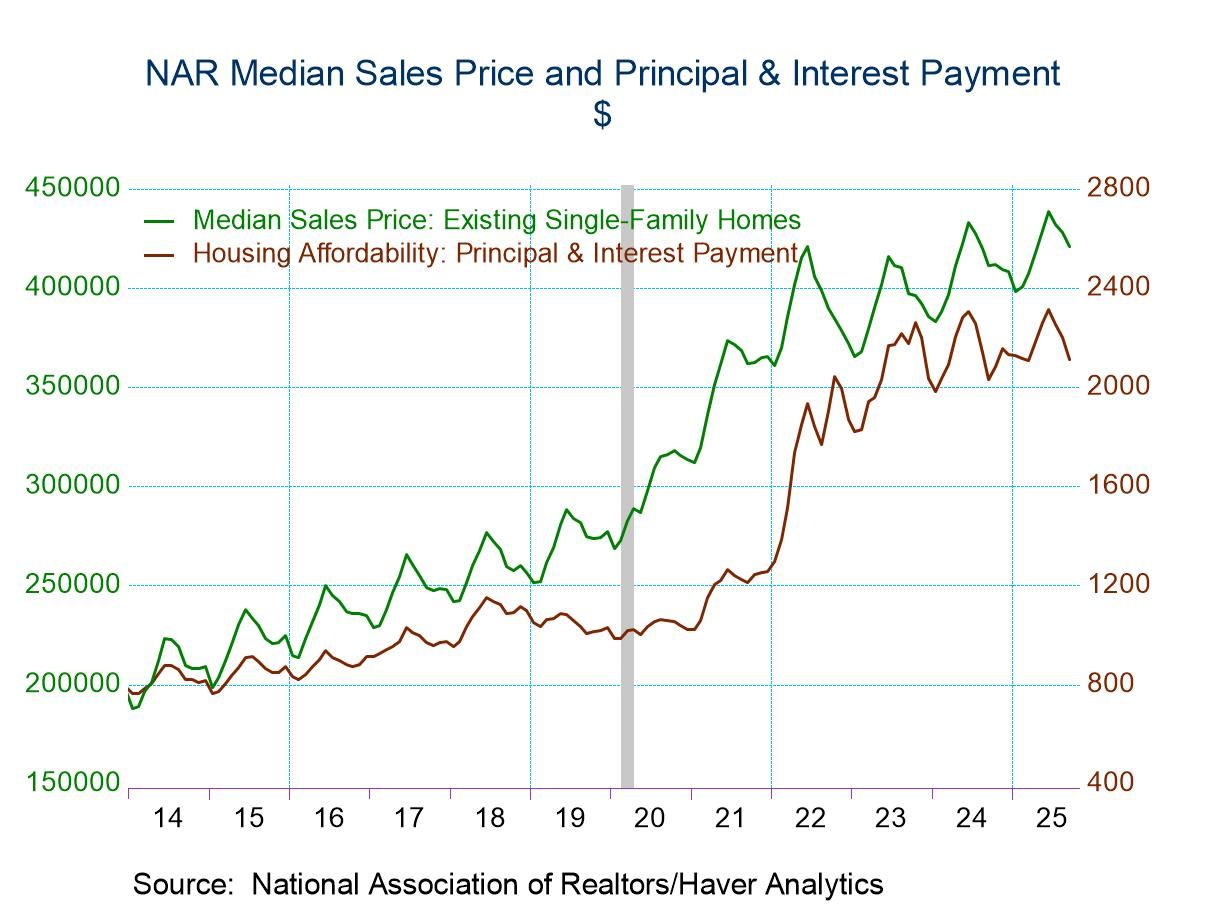 Global| Jun 11 2015
Global| Jun 11 2015U.S. Retail Sales Show Broad-Based Strength
by:Tom Moeller
|in:Economy in Brief
Summary
Overall retail sales including food services & drinking places during May strengthened 1.2% (1.0% y/y) following gains of 0.2% and 1.5%. The April and March results were revised up from little-change and 1.1%. The May increase matched [...]
Overall retail sales including food services & drinking places during May strengthened 1.2% (1.0% y/y) following gains of 0.2% and 1.5%. The April and March results were revised up from little-change and 1.1%. The May increase matched expectations in the Action Economics Forecast Survey. Sales excluding autos improved 1.0% (-0.1% y/y) following an unrevised 0.1% April uptick and a 1.0% March gain, revised from 0.7%. The gain outpaced expectations for a 0.8% rise. During the last ten years, there has been a 92% correlation between the y/y change in retail sales and the change in real GDP. Sales in the retail control group exclude autos, gasoline, building materials & food services. They align with the consumer spending estimates in the GDP accounts. Sales in this grouping gained 0.7% (2.0% y/y) after a 0.1% April uptick and a 0.9% March increase, revised from no change and 0.5%, respectively.
A 2.0% jump in auto sales (5.0% y/y) bolstered the rise in overall retail spending. It followed a 0.7% increase and a 3.5% surge during the prior two months. The latest gain compares to a 7.8% improvement (6.3% y/y) in unit vehicle sales. Sales of building materials rose 2.1% (1.9% y/y) following a 0.4% decline. Sales of gasoline service station jumped 3.7% (-19.4% y/y) with higher prices after a 0.6% dip.
Sales of clothing and accessories improved 1.5% (2.3% y/y) after a slight decline. Nonstore retailers also showed strength with a 1.4% rise (6.0% y/y) on top of three months of strong improvement. General merchandise store sales followed with a 0.8% rise (-0.4% y/y) which made for a 0.7% April decline. Also on the list of strength was a 0.8% rise (7.5% y/y) in sporting goods store sales. Finally, furniture & home furnishing store sales added 0.8% (4.1% y/y) to earlier monthly increases of 1.3% and 2.4%. Restaurant & drinking place sales notched just 0.1% higher but they're up 7.8% y/y. Sales of electronics & appliance stores also ticked just 0.1% higher (-3.4% y/y) following seven months of decline.
In the nondiscretionary sales categories, health & personal care store sales fell 0.3% (+1.2% y/y) following a 0.4% increase. Food & beverage store sales improved 0.2% (2.3% y/y) and made up the prior month's decline.
The retail sales figures are available in Haver's USECON database. The Action Economics figures are in the AS1REPNA database.
| Retail Spending (%) | May | Apr | Mar | May Y/Y | 2014 | 2013 | 2012 |
|---|---|---|---|---|---|---|---|
| Total Retail Sales & Food Services | 1.2 | 0.2 | 1.5 | 1.0 | 3.9 | 3.7 | 5.0 |
| Excluding Autos | 1.0 | 0.1 | 1.0 | -0.1 | 3.1 | 2.7 | 4.1 |
| Non-Auto Less Gasoline, Building Supplies & Food Services | 0.7 | 0.1 | 0.9 | 2.0 | 3.3 | 2.7 | 3.6 |
| Retail Sales | 1.4 | 0.1 | 1.6 | 0.1 | 3.7 | 3.8 | 4.9 |
| Motor Vehicle & Parts | 2.0 | 0.7 | 3.5 | 5.0 | 7.5 | 8.3 | 9.0 |
| Retail Less Autos | 1.2 | -0.0 | 1.1 | -1.4 | 2.6 | 2.6 | 3.9 |
| Gasoline Stations | 3.7 | -0.6 | 1.1 | -19.4 | -2.7 | -0.7 | 4.3 |
| Food Service & Drinking Places Sales | 0.1 | 1.1 | 0.8 | 7.8 | 6.2 | 3.4 | 5.9 |
U.S. Import Prices Decline Despite Petroleum Price
Increase Import prices declined 0.3% (-10.7% y/y) last month following a 0.2% March
fall, revised from -0.3%. The Action Economics Forecast Survey anticipated a
0.2% rise. Prices of petroleum imports increased 1.0% (-47.0% y/y) after a 1.6% rise.
Nonpetroleum import prices, however, were off 0.4% (-2.7% y/y) for a second
month. Industrial materials prices excluding petroleum continued downward by
1.1% (-8.6% y/y), about the same as during the prior three months. Building
materials prices declined 1.1% (-3.4% y/y). Prices amongst the other end-use
categories also continued to fall. Food, feed & beverage prices declined
0.9% (-2.4% y/y) and autos & parts prices were unchanged (-1.9% y/y).
Nonauto consumer goods prices slipped 0.1% (-0.8% y/y) while capital goods
prices were off 0.3% (-1.3% y/y). Export prices also continued weak. Their 0.7% decline followed a 0.1% uptick.
No change had been expected. Agricultural export prices declined 0.8% (-15.6%
y/y) while non-agricultural prices were off 0.7% (-5.3% y/y). Overall industrial
materials & supplies prices declined 1.5% (-14.2% y/y), reflecting a 5.6%
decline (-35.8% y/y) in petroleum prices. That was accompanied by a 0.8% drop
(-14.7% y/y) in foods, feeds & beverage prices. Prices excluding foods and
fuels edged 0.2% lower (-1.9% y/y), down for the eighth straight month. Capital
goods export prices were off 0.3% (+0.3% y/y) and prices excluding computers
& peripheral slipped 0.1% (+0.9% y/y). Nonauto consumer goods prices fell
0.3 (-2.2% y/y) but autos & parts prices ticked 0.1% higher (0.1% y/y). The import and export price series can be found in Haver's USECON
database. Detailed figures, including the industrial materials excluding
petroleum imports and the fuel & lubricant export items mentioned above, are
available in the USINT database. The expectations figure from the Action
Economics Forecast Survey is in the AS1REPNA database.
by Tom Moeller
June 11, 2015
Import/Export
Prices (NSA, %)
May
Apr
Mar
May Y/Y
2014
2013
2012
Imports - All Commodities
-0.3
-0.2
-10.7
-1.1
-1.1
0.3
Petroleum
1.0
1.6
-47.0
-5.6
-2.6
-0.3
Nonpetroleum
-0.4
-0.4
-2.7
0.1
-0.6
0.3
Exports - All Commodities
-0.7
0.1
-6.3
-0.5
-0.4
0.4
Agricultural
-0.8
-1.7
-5.6
-2.7
1.6
2.4
Nonagricultural
-0.7
0.2
-5.3
-0.3
-0.7
0.1
U.S. Initial Unemployment Insurance Claims Meander Lower
by Tom Moeller June 11, 2015
Initial claims for unemployment insurance claims fell to 276,000 during the week ended May 30 following a rise to 284,000 in the prior week, initially reported as 282,000. The four week moving average rose to 274,750, the highest level since early in the month. The Action Economics Forecast Survey expected 280,000 claims in the latest week. During the last ten years, there has been a 76% correlation between the level of initial claims and the m/m change in nonfarm payrolls.
By state, in the week ended May 16 the insured rate of unemployment continued to vary greatly with Virginia (0.81%), Georgia (0.93%), Kansas (1.12%), Idaho (1.24%), Michigan (1.29%) and Texas (1.53%) at the low end of the range. At the high end were Maryland (1.59%), Massachusetts (1.98%), Nevada (2.17%), Pennsylvania (2.20%), California (2.42%) and New Jersey (2.47%). These data are not seasonally adjusted.
The insured rate of unemployment slipped back to 1.6% in the week ended May 23, the lowest point since November 2000.
Continuing claims for unemployment insurance declined to 2.196 million (-16.0% y/y) in the latest week. The four-week moving average fell to 2.214 million, the lowest level since November 2000.
Data on weekly unemployment insurance are contained in Haver's WEEKLY database and they are summarized monthly in USECON. Data for individual states are in REGIONW. The expectations figure is from the Action Economics survey, carried in the AS1REPNA database.
| Unemployment Insurance (000s) | 06/06/15 | 05/30/15 | 05/23/15 | Y/Y % | 2014 | 2013 | 2012 |
|---|---|---|---|---|---|---|---|
| Initial Claims | 276 | 284 | -12.9 | 309 | 343 | 374 | |
| Continuing Claims | -- | 2,196 | -16.0 | 2,599 | 2,978 | 3,319 | |
| Insured Unemployment Rate (%) | -- | 1.6 | 2.0 (05/14) |
2.0 | 2.3 | 2.6 |
Tom Moeller
AuthorMore in Author Profile »Prior to joining Haver Analytics in 2000, Mr. Moeller worked as the Economist at Chancellor Capital Management from 1985 to 1999. There, he developed comprehensive economic forecasts and interpreted economic data for equity and fixed income portfolio managers. Also at Chancellor, Mr. Moeller worked as an equity analyst and was responsible for researching and rating companies in the economically sensitive automobile and housing industries for investment in Chancellor’s equity portfolio. Prior to joining Chancellor, Mr. Moeller was an Economist at Citibank from 1979 to 1984. He also analyzed pricing behavior in the metals industry for the Council on Wage and Price Stability in Washington, D.C. In 1999, Mr. Moeller received the award for most accurate forecast from the Forecasters' Club of New York. From 1990 to 1992 he was President of the New York Association for Business Economists. Mr. Moeller earned an M.B.A. in Finance from Fordham University, where he graduated in 1987. He holds a Bachelor of Arts in Economics from George Washington University.






